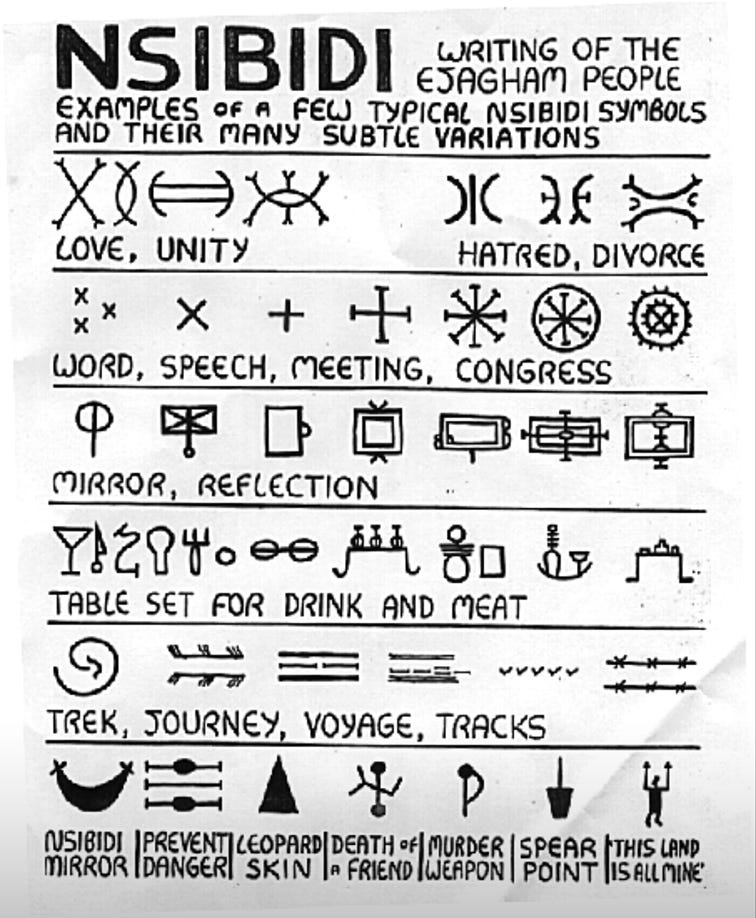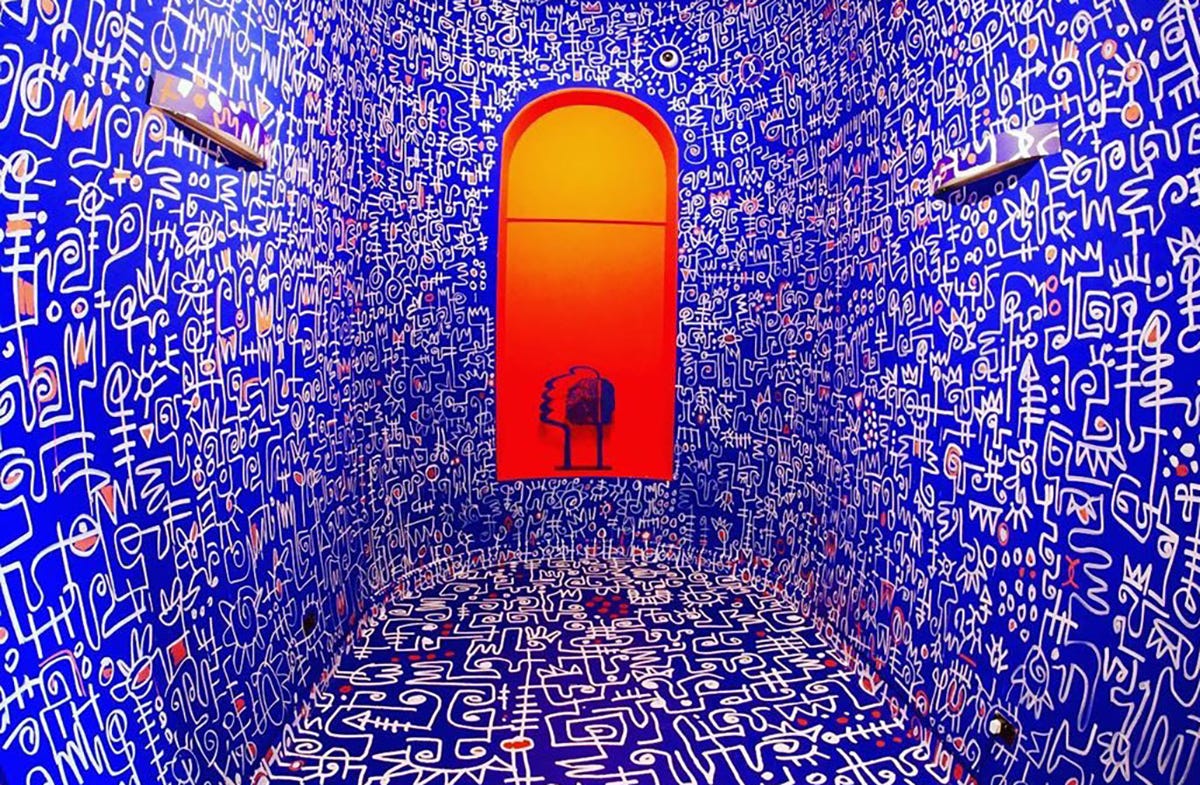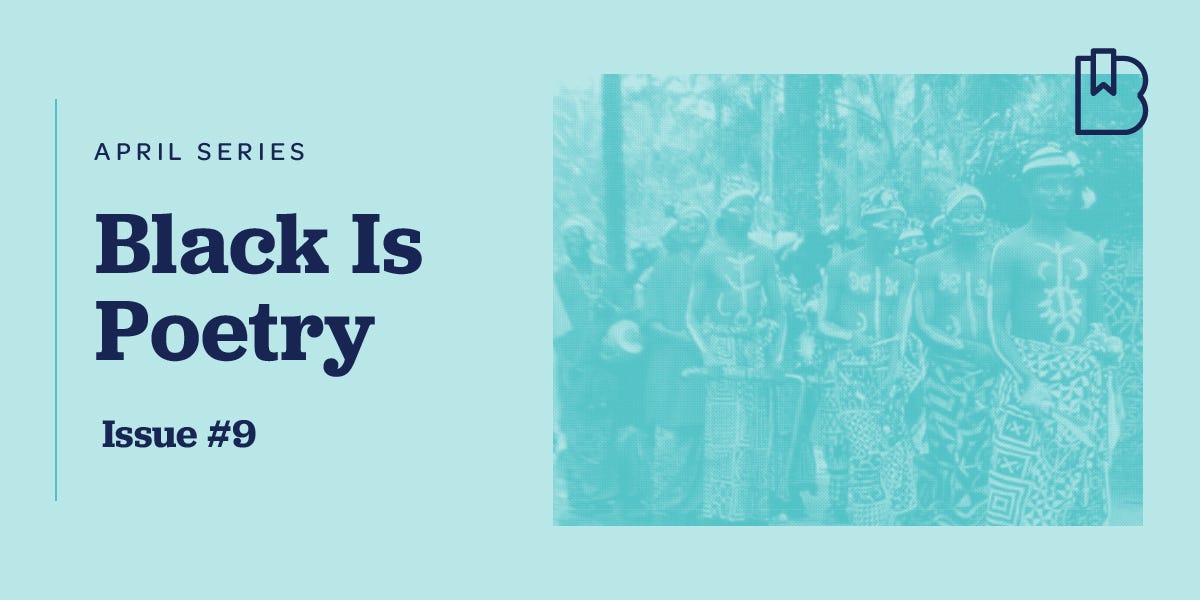📚 Black To School: Issue #9
Black Is Poetry: Ancient Language
Black Is Poetry
Welcome to issue #9 and the start of our new theme, poetry! 📜
If you're new to Black To School, we just explored our contributions to the field of mathematics from early calculators to human computing and STE(A)M education.
Black To School is part of a broader movement focused on celebrating Black people and Black contributions around the world. April is National Poetry Month and will be all about the role of the African Diaspora in the development of poetry and the literary arts.
This month, you’ll get a lesson on the oldest human writing system; a community that inspired some of the most prolific 20th century writers and intellectuals; the lyrical genius behind the top music genre in America; and the emergence of Afrofuturism as a literary bridge that will transport us all to a better world.
In this issue we’ll:
Learn about Nsibidi, the oldest writing system in the world. It was invented by Black Africans and influenced our modern alphabet.
Enjoy these language programs, African literati, and tour one of the oldest secret societies.

Our Mother Tongue
Contributor: Dennis Dortch
Our ability to share complex concepts and learn as a group is what distinguishes humans from apes. This evolution of human expression is what ultimately gave rise to English, along with 7,000 languages spoken around the world. We will follow the unbroken trail from the earliest forms of writing to the origins of modern poetry and literature.
Traditionally, using the Western lens on the rest of the world, the definition of literature has been narrowly limited to written works, excluding the African oral tradition with all of its prose, poems, plays, proverbs, speeches, folktales, chants, songs, and performances. The rationale for disregarding oral forms of literature range from concerns about the unclear timelines, meaning, and authorship to its excessive functional nature and lack of an official record.
Given that spoken rather than written language was the only form of communication for the vast majority of human history, there has been strong support for broadening this scope. Critics expose the inconsistencies in the current definition by referencing the Iliad and Odyssey as examples of Greek oral literature that has been widely embraced, interpreted and studied despite open questions about their true significance, accuracy, and creator(s).
In the end, the slow and reluctant recognition of Africa’s vast and varied contributions to global language arts is driven by lack of cultural understanding and bias, including ethnocentrism, inaccurate translations, and flawed interpretation. With that in mind, it is important to be mindful and challenge our preconceived notions and conditioned preferences when evaluating literary scholarship of any kind. Now, let’s dig a little deeper…
Did you know that the languages that we use today can be traced back to Africa?
The first writing systems in the world were developed by Black Africans. Did you know that our ancestors (long before the rest of the world) used written language to communicate information about everything from community names, property ownership, warfare, and personal debt to family structure, love, and gender relations? Although these ancient African symbolic systems paved the way for modern language, they have either died or are in decline. Check out this endangered alphabets chart that among other things demonstrates Africa’s diverse contributions to the great human lexicon.
The language that are generally accepted to be the oldest discernible writing systems in the world are Old Nubian (often referred to as Proto-Saharan) and Nsibidi. These languages, although a subject of much debate, did originate from Black Africans in South of Ancient Egypt (in Sudan) and Southeastern Nigeria, respectively. Early evidence suggests that they are at least 3,400 to 5,000 years old. These logographic writing system, Nsibidi, (much like Chinese and Japanese) uses wedge-shaped pictures to represent whole words.
These writing systems were initially private languages used amongst the religious community as well as elite and secret societies. Although Nsibidi markings on a person’s clothes and body were reserved for government officials and the powerful, the written messages were actually used to record common events and ordinary communication (like the transcripts of a court case).

Living Language
Nsibidi is at-risk, but alive and still in use today. There is no conclusive evidence that links early African writing systems to all of the world’s languages. And yet, (1) the timing of when other languages first appeared; (2) the trade related interactions between these geographies; (3) and the lower levels of linguistic diversity in other parts of the world suggest a natural diffusion of language as populations migrated out of Africa.
Our African ancestors laid the foundation for modern languages and writing systems across the globe. These early civilizations represent a beautifully rich and complex web of social groups, structures, hierarchies, transactions, relationships, and learning. Black people invented oral and written language and have a long and proud literary history.
🛠️ The Black To School Toolkit
Now What? Dig Deeper with Friends, Family, and Others.
Wondering how to explain the evolution of written language to your kids? Start by sharing this Home Team History video (preteens and up) with your kids on the oldest and most popular African languages. For the little ones (toddlers through age 9), share this African language primer video from Kids Black History.
Ready for some fun and intrigue? Take a look at this article about the Box Office success, Black Panther, that features ancient Nsibidi writing in the throne room. Want to know more about the secret societies that still use the Nsibidi language and traditions? Check out this Hood Museum of Art exhibit from Dartmouth University.
Wondering where you can find some modern African poetry? Check out this mobile site, curated by Badilisha Poetry X-Change, that has the largest database of African poets and poetry on the planet.
⌛ The Black To School Timeline
Black People Invented Oral and Written Language and Have a Long and Proud Literary History.
In this issue, we stepped into Prehistoric times (At least 5,000 Years Ago) The Thing: Old Nubian and Nsibidi, the first written language systems, created by Black Africans in Mesopotamia.
Next week, we’ll fast forward into the 20th Century (100 Years Ago) The Place: Harlem (Renaissance), a community of writers and activists that inspired one of the greatest artistic, cultural, and intellectual movements.
About This Week’s Contributor
Dennis Dortch
As the visionary co-founder and CEO of BLACK&SEXY TV, Dennis Dortch, oversees all productions and has served as the screenwriter, director and showrunner for many series. Dennis is a Sundance Film Festival Alumni and Gotham Award nominee as “Breakthrough Director” for his feature film debut, A Good Day to be Black & Sexy.
Dennis also co-created and sold the first BLACK&SEXY series, The Couple, to HBO and secured development deals for two series for BET Networks. Dennis was honored as a selectee on The Root 100 list for the most influential African-Americans for his work and contributions raising the visibility and voices of the Black Community as an artist, entrepreneur, and culture creator.
About Black To School
Black To School is a collaborative volunteer effort focused on sharing Black history, collecting helpful resources, and creating a safe space for discussion. Learn more about us here and feel free to join our Slack community to keep the conversation going. People of all backgrounds are welcome!
If you’re passionate about this type of work and want to help out, please let us know! The best way to get in touch is by emailing info@blcktoschool.com with “volunteer” as the subject, or by joining our Slack community and sharing that you’d like to be involved.



